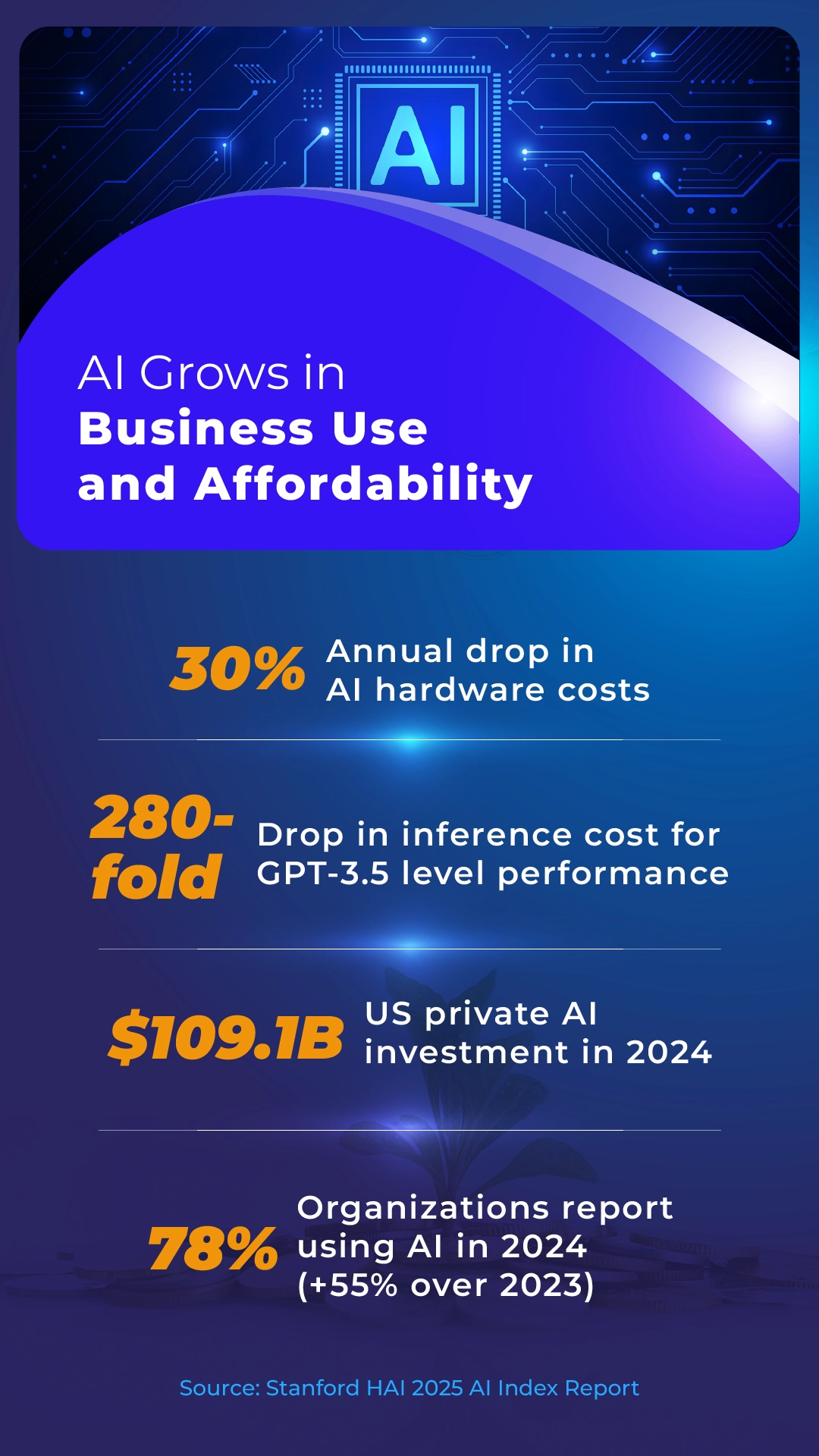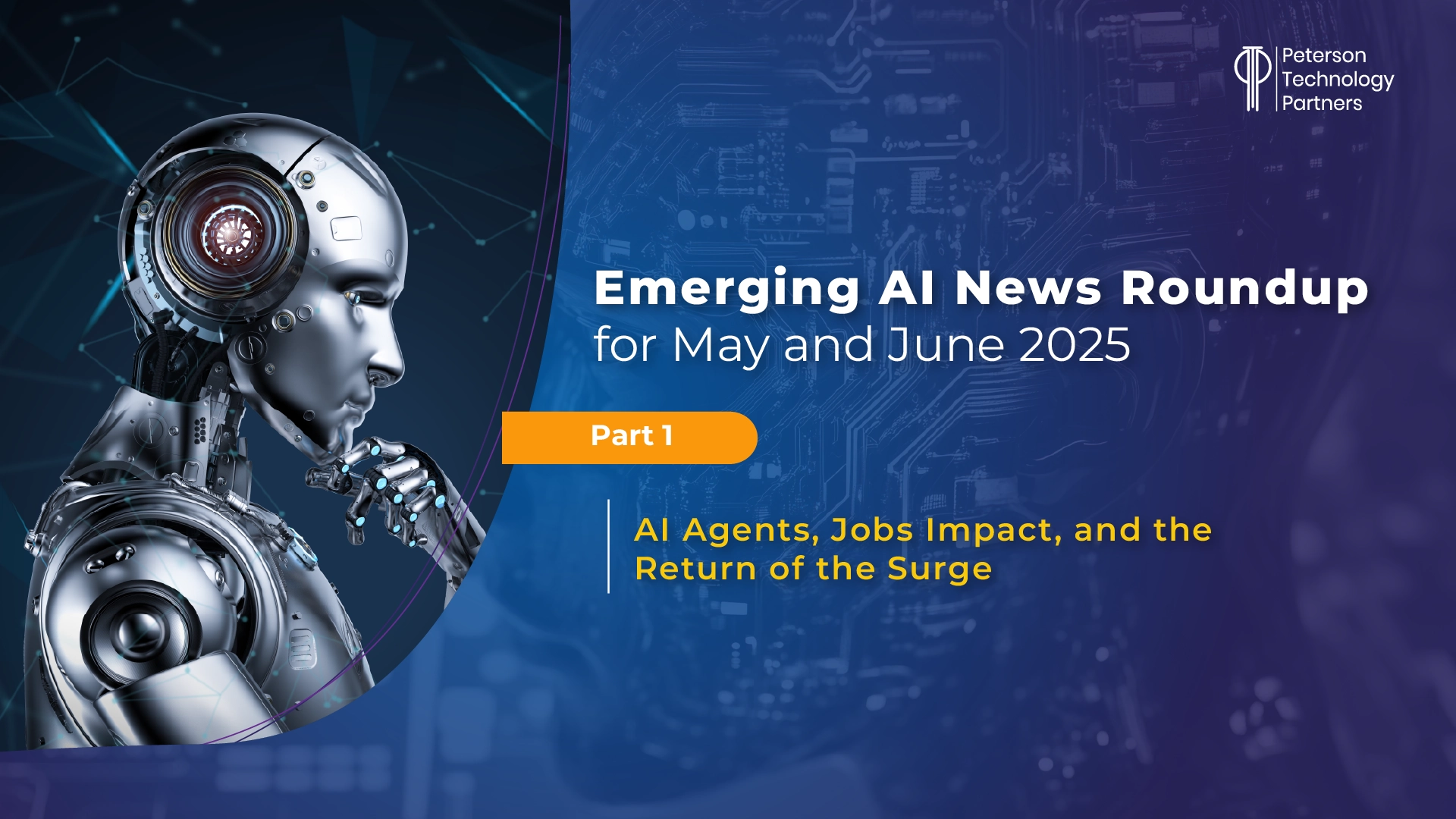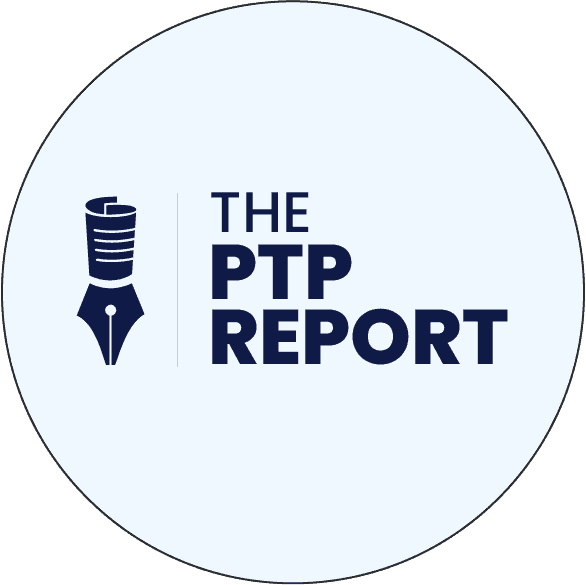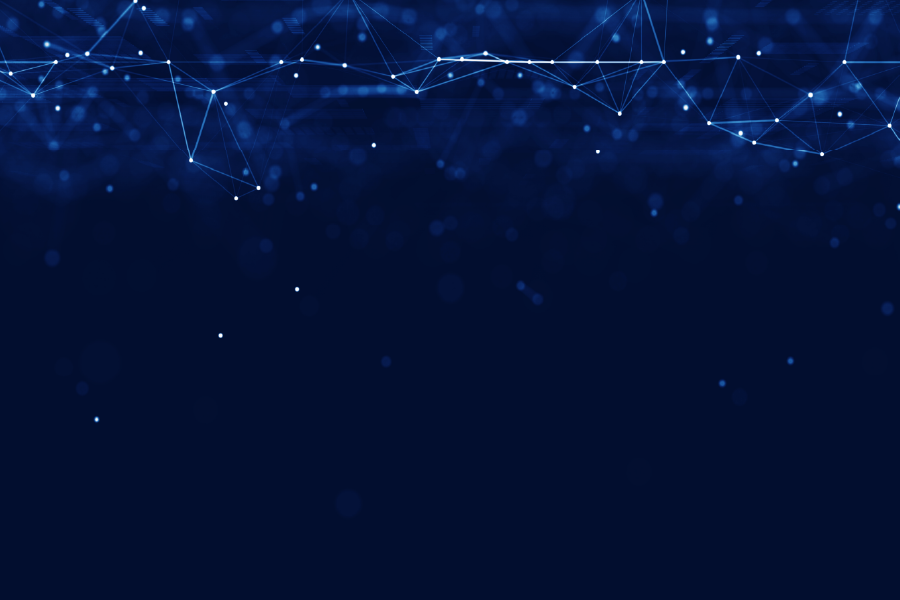It’s summertime and AI is cooking again, with Nvidia and its peers in AI innovation back on top on Wall Street, shrugging off the DeepSeek challenge from January, tariff concerns, and fears the AI bubble might soon burst.
Amazon, Google, Meta, and Microsoft have told their investors that they’re aiming to spend a combined $320 billion on infrastructure this year, with much of that earmarked for AI data centers.
Nvidia is once again the world’s most valuable company, with analysts like Loop Capital’s Ananda Baruah predicting the market for AI chips alone could hit $2 trillion by 2028 and that we could just be entering another “Golden Wave” of GenAI adoption.
Meanwhile, what do Arkansas, California, Kentucky, Maryland, Montana, Utah, and West Virigina all have common?
They’ve joined Colorado, Illinois, Tennessee, and New York by recently enacting new state laws or policies aimed at regulating AI.
All while Washington debates a bill that could ban state-level AI regulations for up to 10 years. (As of today’s writing, this is being lowered to five years, with the potential to allow some state-level regulations to continue. Stay tuned.)
It’s time again for our bi-monthly roundup, and we have so much to cover from the noteworthy AI stories from May and June that we’ve had to split the roundup in two!
Today, we’ll be checking in on court cases, data centers, and the state of AI agents, revisiting the jobs impact, and considering novel use cases.
Next time, we’ll be back to cover the state of global AI and go around the horn of the biggest AI companies, covering the flurry of news that threatens to overwhelm tech media outlets with its volume.
And in case you missed our last roundup, or need to catch up, you can find the last six below (and the full run on PTP):
AI News for May and June 2025
We’ll get to the new releases later, but in terms of other stories breaking in the period, it included examples of leaderboard issues and the continued unreliability of many self-reported benchmarks.
Researchers from Cohere Labs, Princeton, Stanford, MIT, the Allen Institute for Artificial Intelligence, and the Universities of Waterloo and Washington rolled out research detailing issues with the exceedingly popular Chatbot Arena. This includes extensive Meta manipulations around Llama, sampling rate and data access issues favoring bigger fish overall, and the targeting of the format by the biggest players to artificially boost performance.
The researchers warn against overvaluing leaderboard performance and recommend cross-referencing with academic testing suites (some of which we cover here). These findings also increase the importance for companies to use their own benchmarking whenever evaluating new systems.
And speaking of evaluation, between just May 1 and May 27, courtroom judges called out 23 examples of AI hallucinations in legal documents from court records alone, a problem for lawyers that’s proving persistent and most common in the US.
Legal researcher Damien Charlotin maintains a public database worth checking out (with 161 cases profiled at the time of this writing). Note that this only includes those cases that have been discovered, making the likely hallucinations overall far more common.
AI Court Cases Updated
Speaking of court cases, Anthropic in late June won a major decision related to using copyrighted sources in AI training without permission. It’s one of the first cases to consider fair use in this context in depth, making the ruling critical for the bevy of cases still working their way through the system.
Senior District Judge William Alsup asserted that the transformative use of the technology in this case made it fair use, adding:
“The technology at issue was among the most transformative many of us will see in our lifetimes.”
Anthropic’s early training included a collection of over seven million pirated books, and though they later shifted to training with purchased copies, they maintained these pirated books. The judge noted in his ruling that the authors could still sue Anthropic for piracy on these grounds.
And one day later, Meta won a similar fair use decision over authors including Sarah Silverman, Ta-Nehisi Coates, and Junot Diaz.
But the two decisions varied heavily in their rationale, with US District Judge Vince Chhabria finding that the authors in this case failed to sufficiently prove they’d suffered market damage as a result of the AI training.
This leaves the door open for other suits of this kind, even as content agreements are becoming more common.
The New York Times became the most recent during this period, announcing an AI licensing deal with Amazon even as its suit against OpenAI heats up (see Part 2).
And speaking of suits, Amazon, Google, Meta, and Microsoft are all dealing with antitrust suits with the governments of varying countries (including the US). One of these also fell in favor of Big Tech during this period, with the FTC losing a nearly three-year-old case to break up Microsoft’s merger with Activision Blizzard.
The decision, which found that regulators must more clearly prove such mergers will cause real harm to competition, may buoy other companies looking to consolidate in the AI age.
And CNN in May reported on another case that may directly impact the handling of AI decision-making in the workplace, with the tech firm Workday facing what is now a national class action suit on age discrimination.
For companies, the benefits of AI in hiring are not only beneficial—they may also be essential to cope with AI use on the job-seeker side.
As reported by The New York Times, LinkedIn saw a 45% increase in the number of resumes submitted through its platform last year, for an average of 11,000 applications per minute.
With companies getting overwhelmed with submissions, AI scheduling and screening solutions like Chipotle’s Avo Cado, which reduces the hiring time by 75%, are becoming increasingly essential in this unexpected AI hiring arms race.
Regardless, lawsuits are showing that humans must remain in the loop until AI solutions become more reliable and less biased.
Data Centers and the AI Environmental Impact
The energy impact from AI is an ongoing story which we’ve covered multiple times, but a bevy of new data analysis saw it break back into the news cycle during this period.
Among other outlets, MIT Technology Review ran an in-depth look covering how difficult it is to even measure the real impact, with the power demand from AI potentially doubling by the end of this year.
One finding: asking just 15 chatbot questions, making 10 attempts at an image, and three attempts at a five-second video burns an estimated 2.9 kilowatt-hours of electricity.
That is enough, authors James O’Donnell and Casey Crownhart point out, to run your microwave for three and half hours or ride 100 miles on an e-bike.
For more on the topic of AI energy use and potential solutions which may turn the tide, check out the May article by PTP Founder and CEO Nick Shah.
The AI Jobs Impact Revisited in 2025
Jobs also dominated the headlines in May and June (and we covered it in more depth here), but the bullet-points from these updates include:
- Anthropic CEO Dario Amodei told Axios that AI could eliminate half of all white-collar, entry level jobs and push unemployment to 10–20% in the next one to five years.
- OpenAI COO Brad Lightcap disputed this on the Hardfork podcast, suggesting that, while AI will undoubtedly change work and jobs, OpenAI remains extremely involved looking at the impacts and so far have not seen data to back up Amodei’s claims.
- Meanwhile, Oxford Economics found the three-month moving average of unemployment for recent college graduates (ages 22–27) was around 5.3%, well above the national average of 4.2%. This was an aberration historically, as it typically runs well below the national average.
- Economists continue to dispute the causes and ramifications of this, with Federal Reserve governor Michael Barr adding his voice (you can read his entire speech at the Reykjavík Economic Conference here). He discussed historical precedent and potential outcomes, finding that it’s still too early to know “which future we are living in,” though they will continue to be paying close attention.
- New York became the first state to attempt to track AI-related layoffs, adding a checkbox to its WARN system.
- AI-First isn’t a new descriptor for being an AI-centric business, but it’s now being applied in new ways, with companies like Duolingo coming under fire for being outspoken about their effort to use AI to move off human contractors, for example. Others, like Moderna, have gone so far as to merge technology and HR departments into one.
- Google parent company Alphabet’s CEO Sundar Pichai announced in June that hiring isn’t slowing there, though at Amazon, CEO Andy Jassy told employees the opposite in a widely discussed open letter. With a goal of using AI to become more efficient, effective, and lean as a company, he said AI will lead to reduction in their global workforce, though he urged employees to embrace AI to become part of this transition.
- And the fastest-growing job titles per LinkedIn’s 2025 guide: Artificial Intelligence Engineer, Law Clerk, Datacenter Technician, and System Engineer.

AI Agents Updates and Agent Washing
AI agents are the leading edge of AI adoption, with companies eager to bring AI to systems, making them capable of taking autonomous action and stringing together tasks. We’ve covered them repeatedly in this roundup and otherwise, and as we’re midway through 2025, the fervor isn’t diminishing, even if some of the energy may be misguided.
With companies like Salesforce and Oracle investing billions in AI agents as part of their future offerings, others are trying but finding the benefits less obvious, while some are using the term “agent” to push AI solutions that aren’t actually agentic.
Gartner’s AI forecast made news in June by throwing water on some of these cases, claiming that 40% of agentic AI projects currently in the works will be canceled by the end of 2027 due to cost and a lack of clear value.
At the same time, they predict 15% of day-to-day work decisions will be made by agents by 2028 (from 0% last year), and that a third of all enterprise software applications will include agentic AI.
Wired’s Will Knight profiled Goose in May, an AI agent developed by CEO Jack Dorsey’s finance firm Block, which has a simple interface and is helping employees with coding (writing new code and helping devs get up to speed on unfamiliar code bases, for examples) and data visualizations, among other tasks like keeping packages updated.
It’s also enabling non-developers to dabble with code for prototyping and new features.
Open-source and capable of being powered by different AI models, it can also use a variety of tools (like cloud storage or online databases) with Anthropic’s Model Context Protocol (MCP).
And while Goose is proving highly useful, it also still makes mistakes, leading the company to develop its own protocols to manage Goose-generated code. They also ensure humans check its work.
As OpenAI CEO Sam Altman acknowledged on the Hardfork podcast, reasoning models like o3 are making more mistakes than prior models as part of their new capacities, though he expects this to improve again with new releases.
May the Best Agent Win
AI agent interactions are the future, but in the present, they can still prove problematic, as reported in MIT Technology Review in June. Researchers from the University of Toronto, Google DeepMind, USC, MIT, and Stanford have shown that more powerful agents win over less powerful agents in business negotiations and related interactions.
Having agents play the roles of buyers and sellers, they found striking variations in capability, with OpenAI’s o3, for example, earning far more money as seller and spending much less as buyer than its predecessor, GPT-3.5.
Additional variations emerge among models of similar classes, with some failing to close deals but maximizing profit from sales they made, for example, while others completed more sales for less money.
They also found failures continue to occur causing things like negotiation loops and recommend stress testing be done before such solutions are put into use.
More Novel AI Use Cases
Where we have space, we love to profile unique or unexpected AI uses cases being reported, and here are several we’ve come across during this period:
- We’ve covered vibe coding a few times (most recently here), but for a new walk-through of just how easy it can be (for a weekend use case of course), check out this article from Business Insider tech columnist Alistair Barr. He and his daughter created a website to sell her soaps entirely with AI and in very little time, documenting the experience (warts and all).
- The New York Times profiled in June how some top chefs are also using GenAI for new menu items, a far cry from their typical use cases in inventory, scheduling, and other operations tasks. And while all ideas can’t be taken at face value, they’re helping many accomplished chefs devise new ideas or out-of-the-box thinking, as well as providing conversation in areas the chefs may be reluctant to have with other staff members.
- Yum China Holdings, which operates franchises including KFC, Taco Bell, and Pizza Hut, is using a hands-free AI tool called Q-Smart for many restaurant operations tasks, including scheduling, inventory management, and even food quality inspections.
- In sports, AI scouting made news when it was rumored to be involved in the sudden reversal Philadelphia Phillies pitcher Jesús Luzardo suffered this season. Through his first 67 innings, Luzardo had 77 strikeouts and a 2.15 ERA while going 5-1. Then suddenly everything changed, with him giving up 20 runs in just two games. A frantic ensuing study of footage found a tell, which, after being adjusted with the help of coaches, saw him return right back to form, delivering 10 strikeouts and no walks over six innings in his very next start.
- Heat action plans (HAP) are being used in India to manage summer temperature spikes and keep essential services running, but even within cities, some areas—and even buildings—are far more at risk than others. Researchers are now pairing high resolution satellite imagery with AI to radically improve HAPs. These systems can score buildings in cities like Delhi for their heat exposure, including roofing materials, land use, and indoor-outdoor temperature gaps, to highlight settlements most at risk.
AI Innovations in Supply Chain
- The use of AI in supply chain systems is already helping to lower logistics costs, with better demand forecasting and inventory maintenance, and Amazon in June added to use cases, with new agentic AI-powered robots capable of unloading trailers and retrieving parts for repairs. These systems can respond to natural language commands, making the robots more adaptive and useful overall, and capable of acting as more general assistants in the physical world.
- Amazon is also using GenAI for more advanced mapping for delivery and planning integration. They’re looking to pair these advances with specialized eyeglasses to leave a delivery person’s hands free while driving or carrying packages.
- AI is also being harnessed to create digital twins of global supplier networks that can better identify weak links, forecast weather impacts, and automatically suggest factory reconfigurations. These systems also aid manufacturers in re-routing materials.
AI in Education
Yes, AI is being used to cheat on homework and write papers. But there are also many other uses emerging in the area.
- Do you use em-dashes (—)? Here at PTP we do a fair amount—but unfortunately, this is increasingly being associated with AI-generated writing (rightly or wrongly), according to reporting from Rolling Stone. Em-dashes are even being called the “ChatGPT hyphen.” This is leading many writers—especially in academia—to shun this longest of dashes for fear of being falsely accused by readers of using AI writing. Here at PTP, we’re not so quick to abandon it, since—unlike the parenthesis—it doesn’t reduce the importance of an aside.
- And speaking of academia, The New York Times reported in May about a growing trend of students pushing back on their college professors for what they deem to be excessive use of AI in the classroom. This includes overuse of terms like “crucial” and “delve,” but also AI use for things like grading, generating slide and note content, lesson planning, and the generation of data sets. National surveys echo this rising trend, with the number of professors calling themselves frequent AI users doubling from last year to this (18 to 36%). And while it’s providing many professors with more time for office hours and student interaction, some are concerned about the transparency of use for things like rubrics and grading.
- College counselors are a famously overworked profession (the ratio per the American School Counselor Association as reported by Wired is 1 for every 376 students), and this can deny many students who can’t afford private counseling access to things like admissions advice, or help choosing a school or area of study. Enter AI—startup ESAI, the College Guidance Network, and Edhub AI as examples—which provide solutions like matching algorithms and copilots to help students find suitable answers around the clock. These solutions include features like scholarship tools that can help students find tuition assistance that they could be eligible for.
Conclusion
We’re halfway there!
Stay tuned for our second half of the AI roundup next week, where we give the big Apple, Amazon, Google, and OpenAI updates, and look at Nvidia’s powerful return to market leadership this summer.
And as always, if you’re in the market for your own AI/ML expertise, talk to PTP.
With more than 27 years of experience pairing the best tech talent with great companies of all sizes, we are always interested in helping with what you need, whether it’s onsite or off.
References
Nvidia Ruffles Tech Giants With Move Into Cloud Computing, The Wall Street Journal
The Leaderboard Illusion, arXiv:2504.20879 [cs.AI]
GOP senators water down controversial AI provision in Trump’s ‘Big Beautiful Bill’, and AI hallucinations in court documents are a growing problem, and data shows lawyers are responsible for many of the errors, Business Insider
The ‘Kadrey v. Meta’ fair use ruling is just the start of a long, complex AI copyright battle, Mashable
Trump’s FTC antitrust cops just got a loud warning about blocking tech tie-ups, Yahoo Finance
Lawsuit claims discrimination by Workday’s hiring tech prevented people over 40 from getting hired, CNN
Artificial Intelligence Index Report 2025, Stanford University HAI
The A.I. Frenzy Is Escalating. Again., The Professors Are Using ChatGPT, and Some Students Aren’t Happy About It, and Employers Are Buried in A.I.-Generated Résumés, The New York Times
Behind the Curtain: A white-collar bloodbath, Axios
Over 40% of agentic AI projects will be scrapped by 2027: Gartner, Yum China unveils AI tool in a bid to boost efficiency, and Amazon’s delivery, logistics get an AI boost, Reuters
From California to Kentucky: Tracking the Rise of State AI Laws in 2025, White & Case
Anthropic Scores a Landmark AI Copyright Win—but Will Face Trial Over Piracy Claims, Jack Dorsey’s Block Made an AI Agent to Boost Its Own Productivity, India Is Using AI and Satellites to Map Urban Heat Vulnerability Down to the Building Level, and How AI Is Helping Students Find the Right College, Wired
Can we fix AI’s evaluation crisis?, When AIs bargain, a less advanced agent could cost you, and We did the math on AI’s energy footprint. Here’s the story you haven’t heard., The Algorithm from MIT Technology Review
Are Em Dashes Really a Sign of AI Writing?, Rolling Stone





